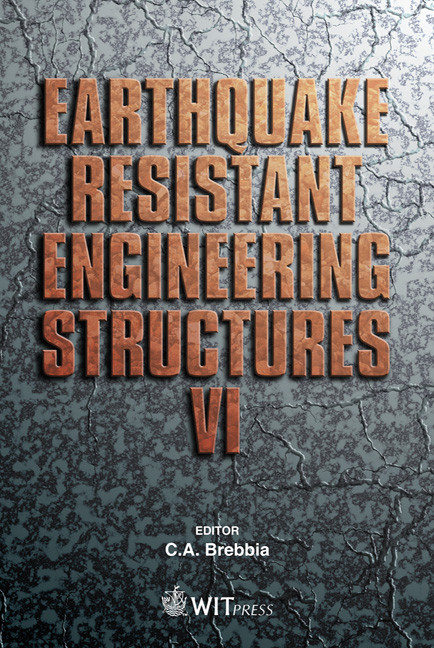Shaking Table Test On Seismic Response Of Reduced-scale Models Of Multi-story Buildings Allowed To Uplift
Price
Free (open access)
Transaction
Volume
93
Pages
10
Published
2007
Size
888 kb
Paper DOI
10.2495/ERES070171
Copyright
WIT Press
Author(s)
T. Ishihara, T. Azuhata, K. Noguchi, K. Morita & M. Midorikawa
Abstract
The effects of rocking vibration accompanied by uplift motion may reduce seismic damage to buildings. Structural systems that are allowed to uplift can be recognized as one of the simplest \“self-centring” systems utilizing potential energy of self-weight. To investigate the effect of uplift motion on seismic responses of buildings experimentally, we conducted parametric shaking table tests using reduced-scale specimens with multi-stories. In this paper, the results of the tests are reported and discussed. Keywords: self-centering, seismic response reduction, rocking vibration, reduced-scale model, higher mode. 1 Introduction It has been pointed out that structural systems of buildings during strong earthquakes have been subjected to foundation uplift [1, 2]. After the first study by Muto et al. [3], many studies dealing with foundation uplift in flexible systems have been conducted (e.g. [4–7]) and some of these researches are summarized in the appendix of ATC-40 [8]. The authors also studied experimentally and analytically from the point of view of utilizing transient uplift motion for reduction of seismic response (e.g. [9–11]). In the experiment, 5 story and 3 story reduced scale steel frame were used as specimen. Structural system allowed to uplift can be recognized as one of the simplest \“self-centring” system. This system utilizes potential energy of self-weight to
Keywords
self-centering, seismic response reduction, rocking vibration, reduced-scale model, higher mode.





